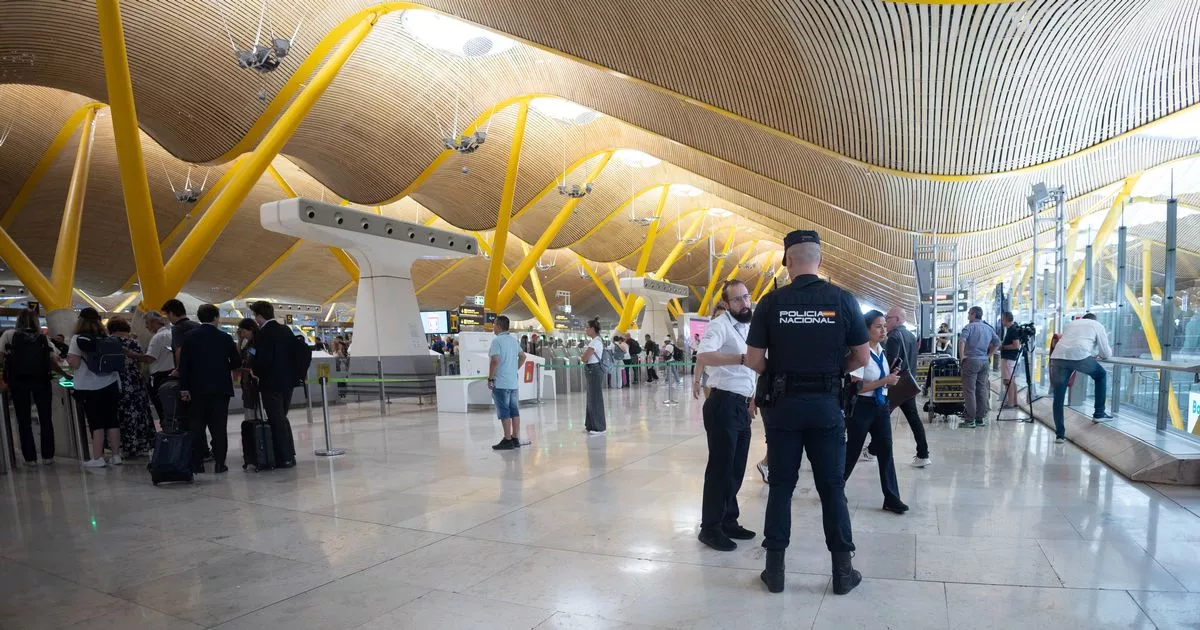By Ben Hurst
Copyright glasgowlive

Travellers bound for Spain have been alerted to fresh entry regulations taking effect from October 12.
The changes see EU nations introducing biometric entry requirements, with authorities previously expressing worries this could lead to queues.
From October 12, 2025, the European Union will begin rolling out its new Entry/Exit System (EES) for non-EU visitors to the Schengen zone, encompassing 29 nations.
This computerised system will substitute manual passport stamping by electronically recording travellers’ biometrics (fingerprints and photographs) and journey information to strengthen border security and monitor visits.
The Foreign Office guidance for Spain states people must be conscious of the alteration, reports the Manchester Evening News.
Officials declare: “From 12 October 2025, the European Union’s (EU) new Entry/Exit System (EES) will begin. When travelling into and out of the Schengen area, for short stays, you may need to:
have your fingerprints and your photo taken answer the Schengen Border Code questions
“If you enter the Schengen area through the Port of Dover, Eurotunnel at Folkestone or St Pancras International, this information will be taken at the border, before you leave the UK. You may also need to provide either your fingerprint or photo when you leave the Schengen area.
“EES may take each passenger a few extra minutes to complete so be prepared to wait longer than usual at the border once the system starts. “.
Typical Border Questions
Purpose of your trip: Why are you visiting the EU? Duration of your stay: When do you plan to leave? Financial means: How will you support yourself during your trip? Where you will stay: Do you have confirmed accommodation? Return ticket: Do you have proof of onward travel or a return ticket? Travel insurance: Are you covered by travel insurance?
How it will be phased in
EES will be introduced in phases from 12 October, meaning your experience of it after it goes live will vary depending on where you are travelling to. This is a summary of the phases:
12 October launch: At least one border point in each country should operate the new system, increasing to 10% of border points after the first 60 days. December 2025: Borders operating EES start to take biometric checks (facial scan and/or fingerprints). January 2026: Half of border points should be operating EES, with at least a third of passengers going through the system. March 2026: All borders are operating EES and taking biometrics, processing at least half of passengers through the system. 10 April 2026: System fully live, with all borders processing all passengers through EES, and taking biometrics.
Passport validity requirements
Spain follows Schengen area rules. Your passport must:
have a ‘date of issue’ less than 10 years before the date you arrive – if you renewed your passport before 1 October 2018, it may have a date of issue that is more than 10 years ago have an ‘expiry date’ at least 3 months after the day you plan to leave the Schengen area (the expiry date does not need to be within 10 years of the date of issue)
Check with your travel provider that your passport and other travel documents meet requirements. Renew your passport if you need to. You will be denied entry if you do not have a valid travel
The Foreign Office adds: “If you’re a visitor, border guards will look at your entry and exit stamps to check you have not overstayed the 90-day visa-free limit for the Schengen area.
“If your passport is missing a stamp, show evidence of when and where you entered or left the Schengen area (for example, boarding passes or tickets) and ask the border guards to add the date and location in your passport.”
At Spanish border control, you may need to show:
a return or onward ticket proof of your travel insurance you have enough money for your stay – the amount varies depending on your accommodation a hotel booking confirmation or proof of address if you’re staying at your own property an invitation or proof of address if staying with a third party, friends or family, such as a ‘carta de invitation’ completed by your hosts
For more information on the entry requirements for Spain click here.



